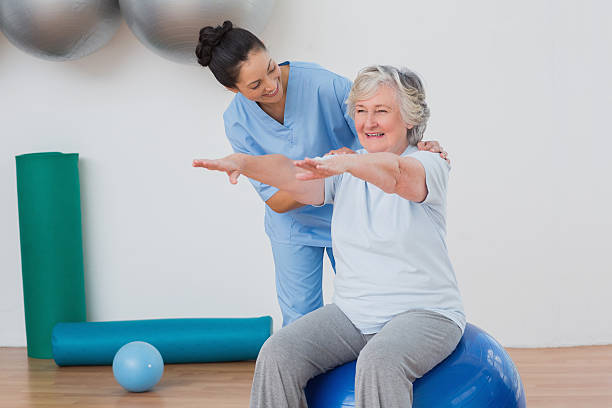GERIATRIC PHYSIOTHERAPY -
Geriatric Physiotherapy covers a problem of elders. Physiotherapists play a key role for older people to enhance mobility and independence. Physiotherapists can make a difference by helping older people to be comfortable and pain-free. Three types of problems are faced in geriatric physiotherapy. One is the problems that happen because the patient simply does not use their limbs or does not exercise due to sedentary lifestyle. These can be treated by range-of-motion and other exercises. Second is the problems that deals with cardiovascular disease, like heart disease and stroke. Exercise, electrical stimulation, and more can be used to treat these problems. The third is skeletal problems. Geriatric physiotherapy helps people who have osteoporosis and arthritis disorders. These problems require special physiotherapy.
Geriatric people have confusion, falls, loss of mobility, and day-to-day functioning. Disability is common in them so a healthy lifestyle should be encouraged.
Elders become inactive and as a result of that their strength and function may deteriorate. Every person is different therefore, we assess each patient carefully and discuss their individual needs and expectations so we can create a rehabilitation programme for their needs. Such programmes often involve balance training, gait re-education, strengthening, stretching and functional exercise plans which are monitored and progressed accordingly. In cases where the patient is not independent, we offer relative/carer’s education for the appropriate use of mobility and rehabilitation equipment.
Geriatric physical therapy considers the age of older people because they tend to become less active, lose muscle strength, decrease coordination, and have a lesser tolerance for physical effort. Physiotherapists serve a critical role in allowing older persons to fully restore their movement.

BENEFITS OF GERIATRIC PHYSIOTHERAPY -
- Reduce pain.
- Mental health benefits.
- Getting independent.
- Restoring functions.
- Improve quality of life.
- Improve balance, coordination, strength, motor control, flexibility, endurance, and even memory.
- Helps to maintain cognitive function.
- Reduces the risk of heart disease.
- Helps to maintain the ability to carry out activities of daily living.
- Improves mood and self-esteem.
- Reduces the risk of falls.
- Treats and prevents joint problems, reduces high blood pressure and obesity.
- Maintain mobility.